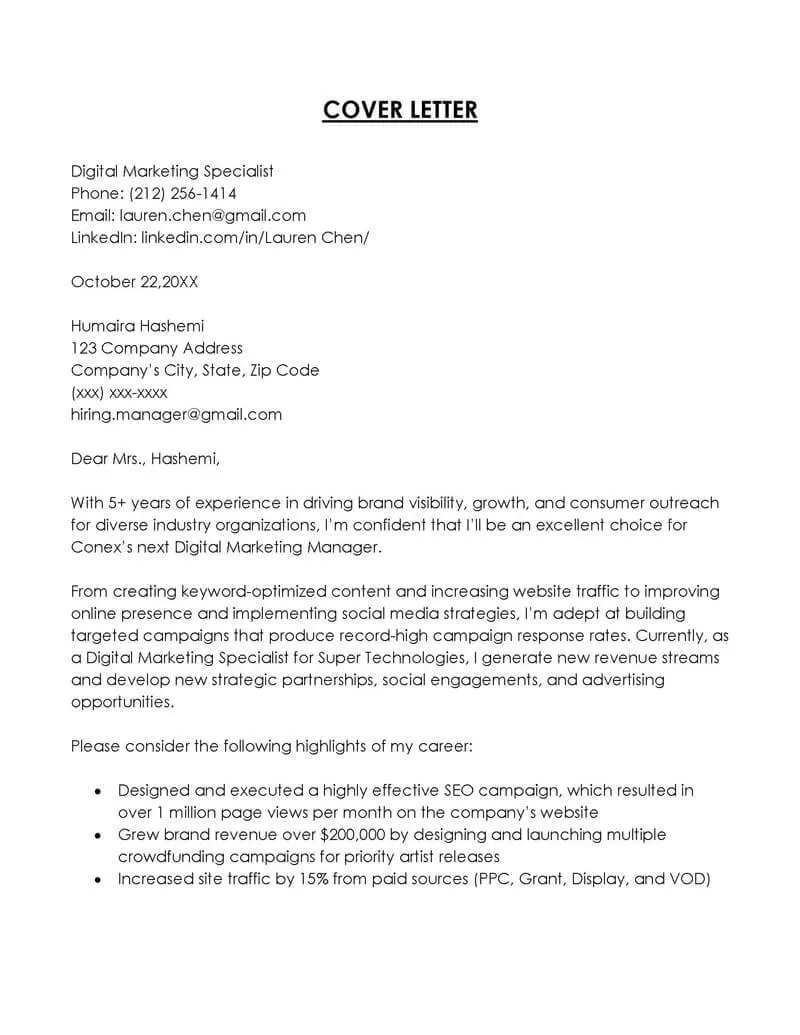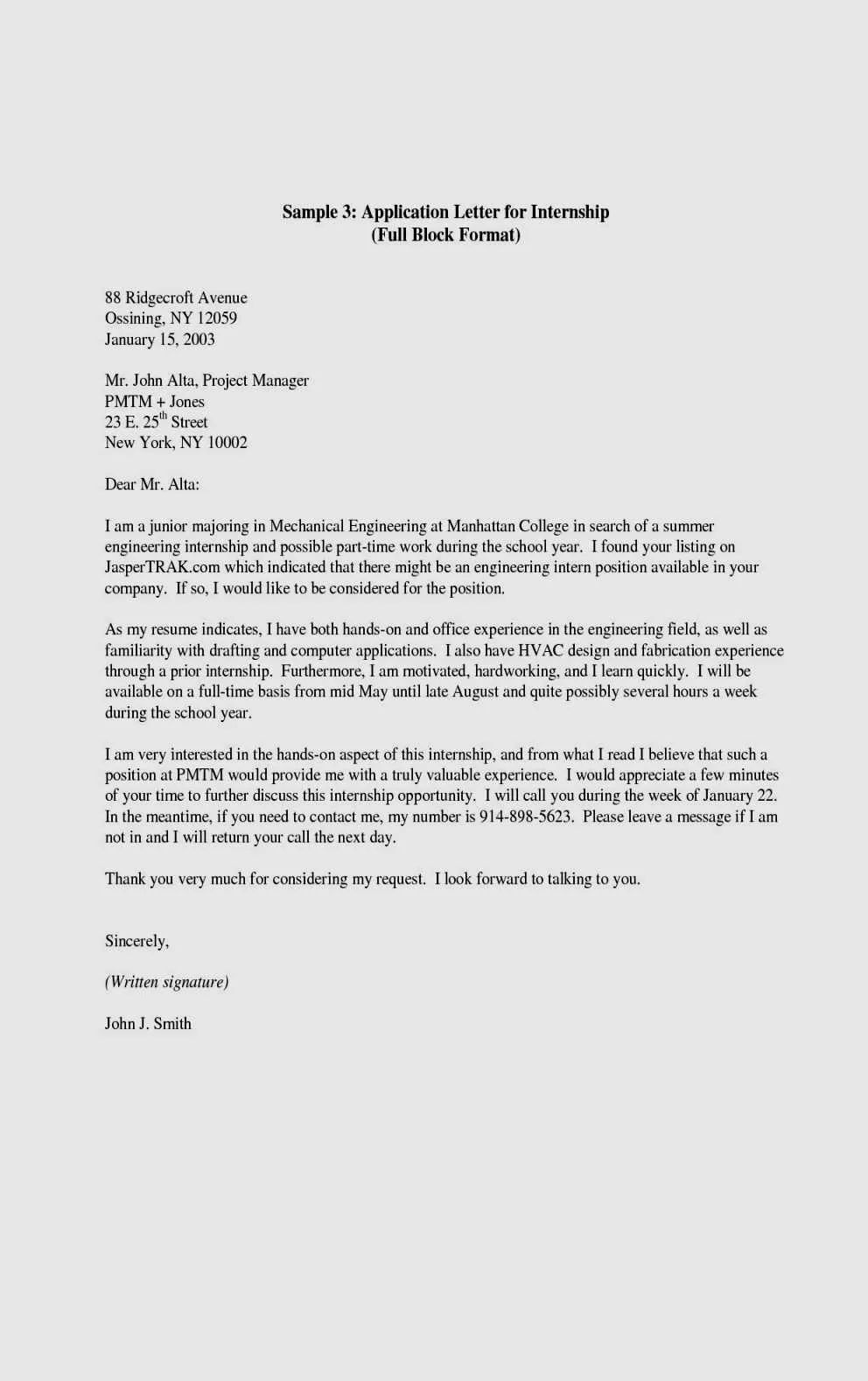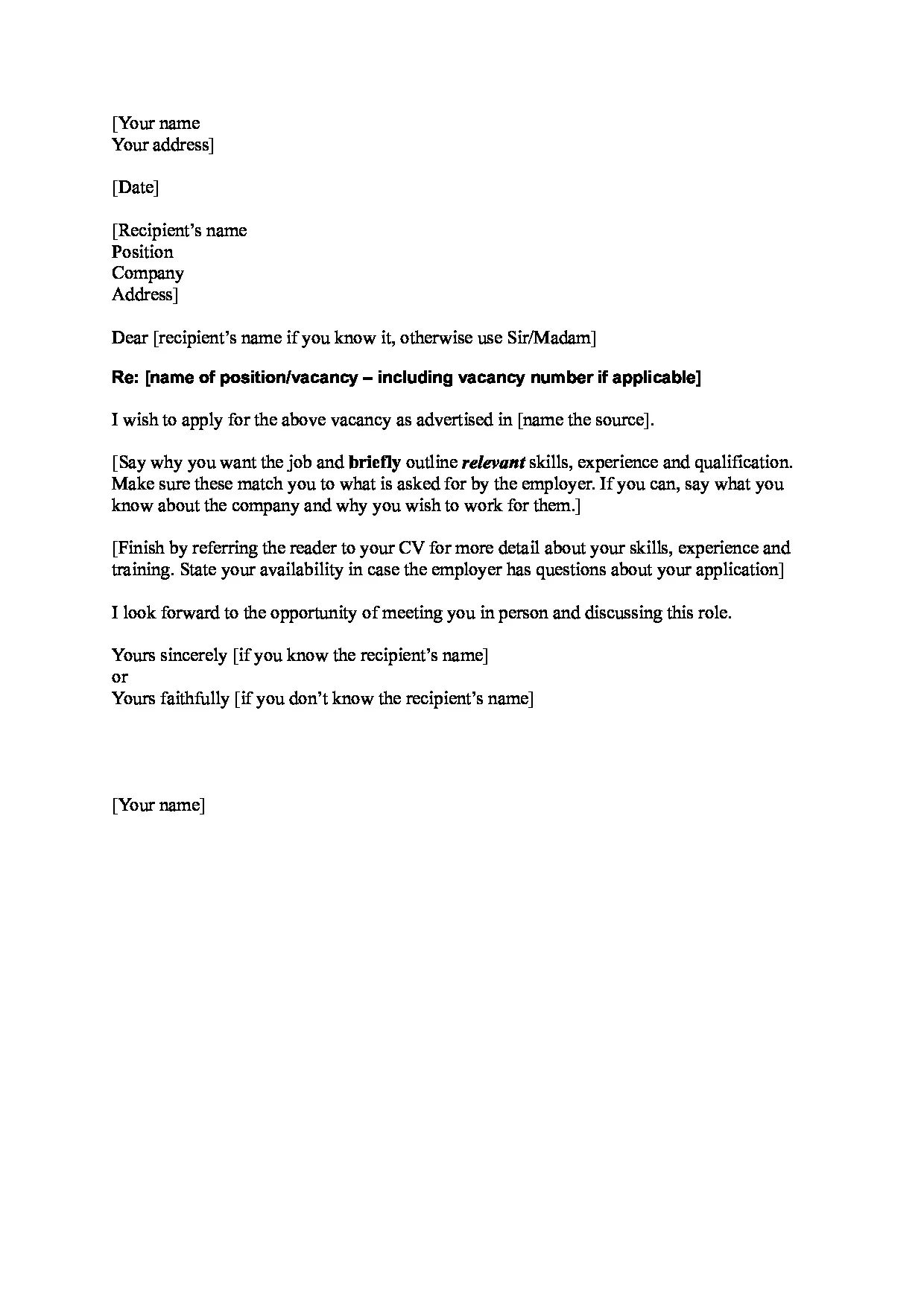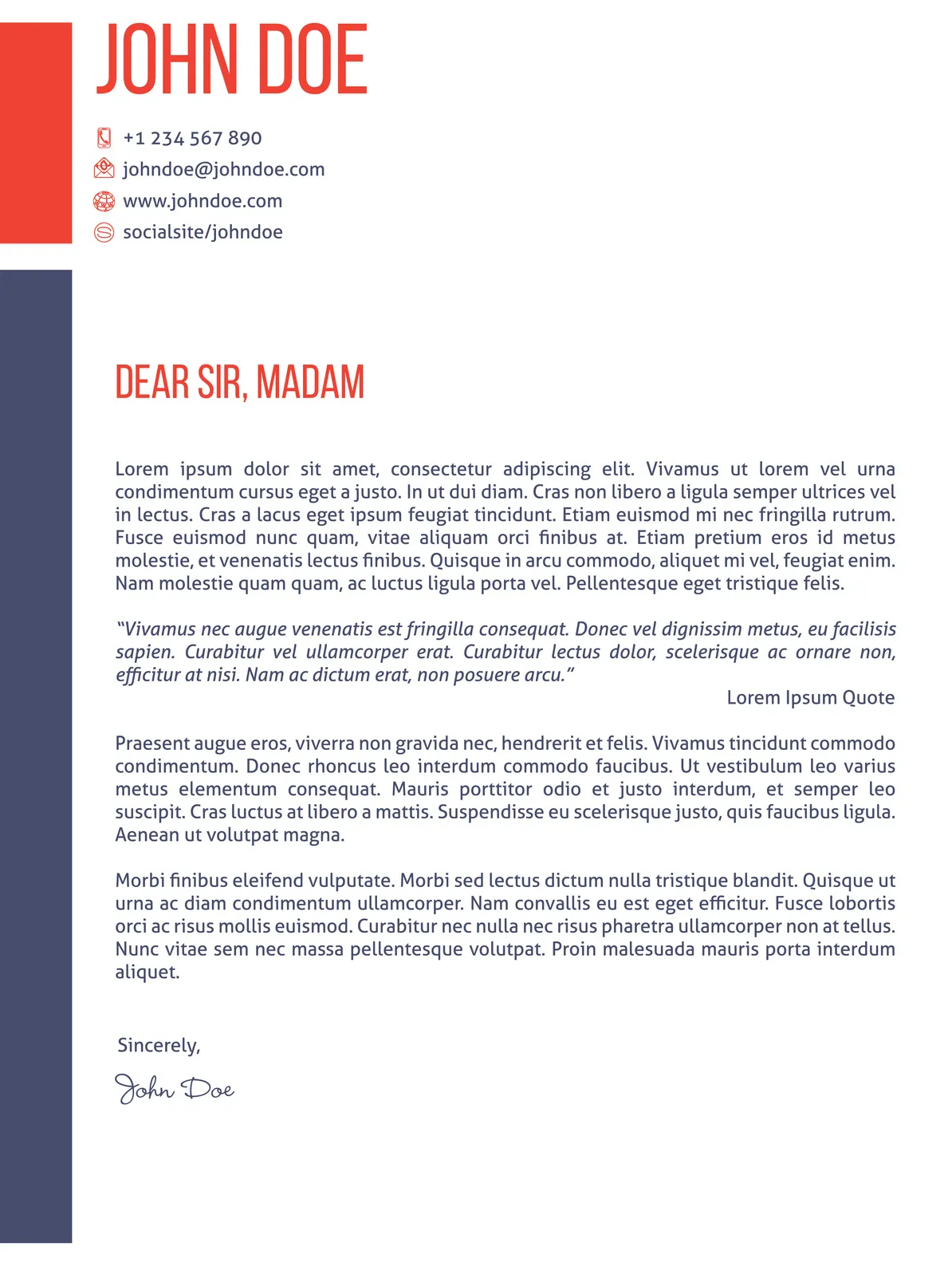What is a Cover Letter and Why You Need One
A cover letter is a crucial document accompanying your resume when applying for jobs. It serves as your introduction to a potential employer, providing a personalized overview of your qualifications, skills, and why you are a good fit for the specific role. Unlike a resume, which is a factual summary of your experience, a cover letter allows you to tell a story, showcasing your personality and enthusiasm for the opportunity. Think of it as your chance to make a strong first impression and stand out from the competition.
Purpose of a Cover Letter
The primary purpose of a cover letter is to persuade the hiring manager to read your resume and consider you for an interview. It should highlight your key skills and experiences that align with the job requirements, demonstrating your understanding of the company and the role. A well-written cover letter can effectively communicate your interest in the position, your unique value proposition, and your career goals, ultimately increasing your chances of landing an interview.
Difference Between a Cover Letter and a Resume

While both a cover letter and a resume are essential parts of your job application, they serve different purposes. A resume provides a concise summary of your work history, education, skills, and accomplishments, presented in a factual, bullet-point format. The cover letter, on the other hand, offers a narrative, elaborating on your qualifications, explaining your interest in the specific role and company, and demonstrating your personality. The resume answers the question “What have you done?” while the cover letter answers “Why are you the right person for this job?”
How to Write a Cover Letter Step-by-Step
Writing a compelling cover letter can seem daunting, but breaking it down into steps makes the process more manageable. By following a structured approach, you can create a cover letter that effectively highlights your qualifications and increases your chances of securing an interview.
Step 1 Researching the Company and Role
Before you begin writing, research the company and the specific role you are applying for. Visit the company website, read their “About Us” section, and explore their social media presence. Understand their mission, values, and recent news. Review the job description carefully, identifying the key skills, experiences, and qualifications the employer is seeking. This research is crucial for tailoring your cover letter to demonstrate a clear understanding of the company’s needs and how your skills align with the role. (Image: researching-company-job)
Step 2 Formatting Your Cover Letter

Proper formatting ensures your cover letter is easy to read and professional in appearance. A well-formatted cover letter makes a positive first impression. This includes the layout and how you present the information. Use a clear and readable font, and format the document for easy scanning. Ensure the layout is clean and organized. Proper formatting can set your cover letter apart.
Contact Information
At the top of your cover letter, include your contact information: your full name, phone number, email address, and optionally, your LinkedIn profile URL. This allows the hiring manager to easily reach you.
Date
Below your contact information, include the date you are sending the cover letter. This shows when the document was created.
Recipient’s Information

Include the hiring manager’s name (if you know it), their title, and the company’s address. Address the letter to a specific person whenever possible. This shows you have taken the time to personalize the letter.
Salutation
Begin with a professional salutation, such as “Dear Mr./Ms./Mx. [Last Name],” If you don’t know the hiring manager’s name, use a general greeting like “Dear Hiring Manager” or “Dear [Company Name] Hiring Team.”
Step 3 Writing the Opening Paragraph
The opening paragraph is your chance to grab the reader’s attention and state your purpose. It should immediately inform the reader about the position you are applying for and how you learned about the opportunity. Make it clear and concise, capturing the reader’s interest from the start. The goal is to make them want to keep reading.
Grabbing Attention

Start with a hook that grabs the reader’s attention. This could be a statement of your enthusiasm for the company or role, a brief mention of a key accomplishment relevant to the job, or a reference to a mutual connection. The aim is to make them want to continue reading.
Stating Your Purpose
Clearly state the position you are applying for and where you saw the job posting. Be specific and avoid generic phrases. For example, “I am writing to apply for the Marketing Manager position advertised on LinkedIn.”
Step 4 Writing the Body Paragraphs
The body paragraphs are the core of your cover letter. This is where you elaborate on your qualifications, skills, and experiences. You should highlight the most relevant aspects of your background and how they align with the job requirements. Support your claims with specific examples and quantifiable achievements. This section should be about 2-3 paragraphs long.
Highlighting Relevant Skills and Experience

Focus on the skills and experiences that are most relevant to the job description. Choose 2-3 key skills and provide specific examples of how you have used them in previous roles or projects. Explain the situation, your actions, and the results you achieved. Use action verbs to describe your accomplishments.
Quantifying Achievements
Whenever possible, quantify your achievements. Use numbers, percentages, and data to demonstrate the impact of your work. For example, instead of saying “Improved sales,” say “Increased sales by 15% in Q2.” This provides concrete evidence of your capabilities and value. Remember to showcase the results that you have achieved.
Matching Skills to Job Requirements
Carefully align your skills and experience with the job requirements outlined in the job description. Identify the keywords used in the job posting and incorporate them into your cover letter where appropriate. This shows the hiring manager that you have the necessary qualifications and understand what the role entails.
Step 5 Writing the Closing Paragraph
The closing paragraph should express your enthusiasm for the opportunity and reiterate your interest in the position. It should also include a call to action, encouraging the hiring manager to contact you for an interview.
Expressing Enthusiasm
Reiterate your excitement about the opportunity and the company. Show that you have thoroughly researched the role and are genuinely interested in contributing to their success. This can be a powerful way to show your passion for the role.
Call to Action
Include a clear call to action, such as “I am eager to discuss my qualifications further and look forward to hearing from you.” Provide your contact information again, if you wish. Thank the hiring manager for their time and consideration.
Step 6 Proofreading and Editing
Before submitting your cover letter, carefully proofread and edit it for any errors. Typos and grammatical mistakes can create a negative impression. Read the letter aloud to catch any awkward phrasing or sentence structure. Ask a friend or career advisor to review it for feedback. Attention to detail is key. (Image: cover-letter-formatting)
Cover Letter Formatting Tips
The formatting of your cover letter is just as important as the content. Proper formatting makes your letter easy to read and visually appealing, increasing the chances that the hiring manager will pay attention to your qualifications.
Font and Font Size
Use a professional and easy-to-read font such as Times New Roman, Arial, or Calibri. The font size should be between 10 and 12 points. Keep the font consistent throughout the document.
Margins and Spacing
Use standard margins (1 inch on all sides) and single or 1.15 line spacing. This provides ample white space, making your cover letter less cluttered and easier on the eyes.
File Format
Save your cover letter as a PDF file unless the job posting specifies otherwise. PDF files preserve the formatting of your document, ensuring that it looks the same regardless of the recipient’s operating system or software. (Image: cover-letter-template)
Cover Letter Mistakes to Avoid
Avoiding common mistakes can significantly improve the effectiveness of your cover letter. Be aware of these pitfalls. By paying attention to these details, you can present yourself in the best possible light and increase your chances of success.
Generic Cover Letters
Sending a generic cover letter that is not tailored to the specific job and company is a major mistake. Hiring managers can easily spot generic letters and often disregard them. Always customize your cover letter to reflect the requirements of the position and demonstrate your knowledge of the company.
Typos and Grammatical Errors
Typos and grammatical errors create a negative impression and can suggest a lack of attention to detail. Always proofread your cover letter carefully before submitting it. Ask someone else to review it as well. A clean and polished cover letter is essential.
Overusing “I”
While it’s important to express your interest and qualifications, avoid overusing the word “I.” Focus on your accomplishments and what you can bring to the company, rather than simply listing your experiences. Balance the use of “I” with descriptions of your achievements and skills.
Not Tailoring to the Job
Failing to tailor your cover letter to the specific job is a missed opportunity. Always review the job description carefully and address the key requirements in your letter. Show how your skills and experiences align with what the employer is looking for. Demonstrating a clear understanding of the job requirements increases your chances.
Cover Letter Examples and Templates
Reviewing cover letter examples and templates can help you understand the structure and content of a well-written cover letter. Adapt the examples to fit your own circumstances and job application.
Example 1 Entry-Level Position
Here is an example for an entry-level position. It highlights enthusiasm, education, and relevant skills. It demonstrates how to express interest in the role. Adapt this as a model for your own entry-level application. (Image: cover-letter-example)
Example 2 Experienced Professional
For experienced professionals, a cover letter should showcase accomplishments and quantify results. This example demonstrates how to show impact and express your experience. Adapt to your industry. Showcase the impact of your work. (Image: cover-letter-writing-tips)
Where to Find Cover Letter Templates
Many websites and resources offer free cover letter templates. These templates provide a basic structure and formatting guidelines, helping you get started. Some examples of sites are: [Insert examples here].
Frequently Asked Questions (FAQ) About Cover Letters
Here are answers to some frequently asked questions about cover letters:
How long should a cover letter be
A cover letter should ideally be one page long, consisting of 3-5 paragraphs. Keep it concise and focused on the most relevant information.
Should I send a cover letter as a PDF or Word document
Unless the job posting specifies otherwise, send your cover letter as a PDF to preserve the formatting. PDFs are more reliable. They ensure your formatting appears as intended.
Can I use the same cover letter for multiple jobs
While you can use a template as a starting point, you should always tailor your cover letter to each specific job. Tailor it to the job requirements. Tailoring shows you are interested.
Conclusion
Writing a strong cover letter is a critical step in the job application process. By following these guidelines, you can create a cover letter that effectively highlights your qualifications, demonstrates your enthusiasm, and increases your chances of getting an interview. Remember to tailor your cover letter to each specific job, proofread carefully, and always put your best foot forward. Your cover letter should give employers a glimpse of who you are. Make it a good one.
